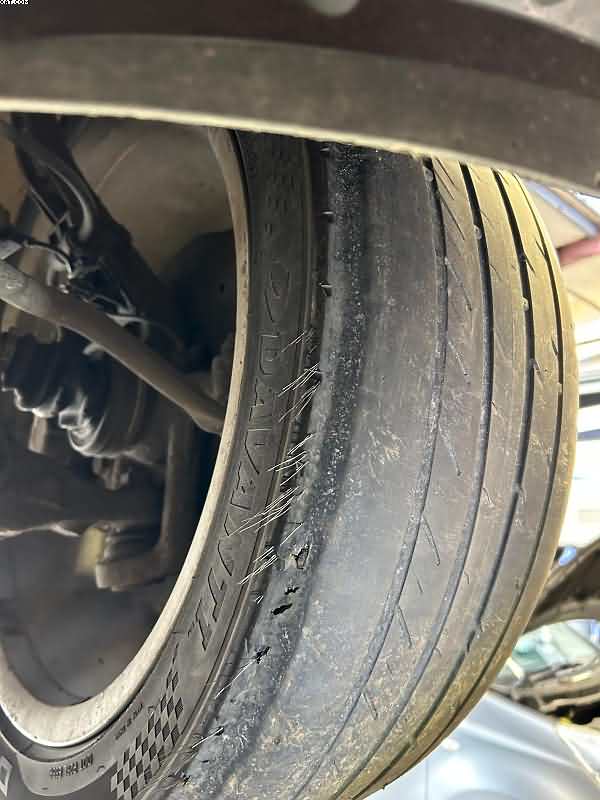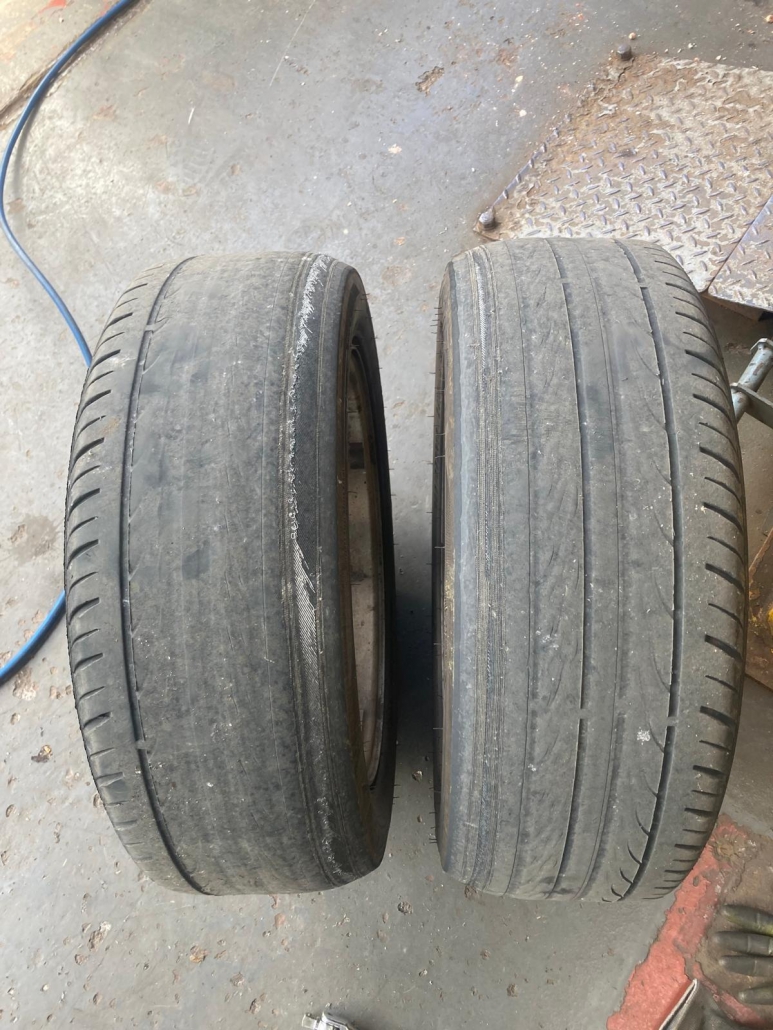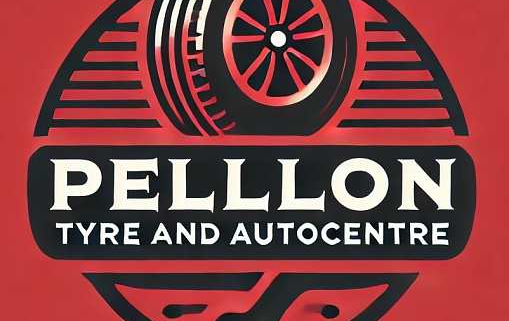steel-wires-tyre-danger-halifax
Steel-belted Radials

steel-wires-tyre-danger-halifax
Steel Wires Showing Through Your Tyres? The Hidden Danger Halifax Drivers Can’t Ignore
Every week at Pellon Tyre & Autocentre, we see all sorts of tyre problems — bulges, punctures, splits, the odd nail, and plenty of pothole damage thanks to our lovely Calderdale roads. But every now and again, someone pulls onto the forecourt with something far more worrying.
The tyre is so worn or damaged that the steel wires inside the tyre are actually sticking through the rubber.
When that happens, you don’t need a pressure gauge or a tread depth tool — the tyre is completely finished, unsafe, and ready to blow at any moment.
It’s something we’ve seen quite a bit over the years, so here’s a simple explanation of what causes steel wires to appear and why Halifax drivers need to act fast when it happens.

What Are Those Steel Wires, Anyway? steel-wires-tyre-danger-halifax
Modern tyres are built using what’s known as steel-belted radial construction. Underneath the rubber you can see, there are layers of:
- Strong steel belts
- Reinforced fabric
- Rubber compounds designed for grip and stability
The steel belts give the tyre its strength and shape, especially at motorway speeds, and help protect it from punctures. Without them, the tyre would simply collapse under the weight of the car.
Back in the old days, cars used cross-ply tyres, but they wore out quickly and didn’t handle well at higher speeds. Things changed when Michelin introduced the first steel-belted radial tyre in 1946. Europe and Japan adopted them quickly, while the Americans took a bit longer — only switching properly after the 1970s oil crisis.
Today, virtually every car in Halifax is running on radial tyres with steel belts.
So why do the steel wires start showing? steel-wires-tyre-danger-halifax
The short answer?
Because the tyre has completely worn out or suffered severe damage.
Here are the most common reasons we see in the workshop:
1. Driving on Bald Tyres
The tread wears away, and eventually the outer rubber disappears completely — leaving the steel belts exposed.
Many drivers don’t realise tyres should be changed well before they reach the legal limit of 1.6mm.
2. Under-Inflation
Low pressure wears out the edges of the tyre quicker.
Eventually the rubber thins, breaks down, and the wires poke through.
3. Over-Inflation
Too much air puts all the pressure on the centre of the tread.
We’ve seen steel belts showing in a perfect strip down the middle of the tyre!
4. Wheel Alignment Problems
Halifax is notorious for potholes, and a heavy bang can knock the tracking out.
This makes one side of the tyre scrub away fast — often right down to the steel.
5. Hard Driving
Wheelspins, cornering fast, burnouts and harsh braking can rip through rubber in no time.
We see this more on hot hatches and performance cars.
6. Driving on a Flat
When the sidewall collapses, the inner structure tears, exposing the steel layers.
7. Cheap or Part-Worn Tyres
Some low-quality tyres don’t last long.
A ‘bargain’ tyre can end up costing more if it wears down to steel before you realise.
Is It Dangerous to Drive with Steel Wires Showing? steel-wires-tyre-danger-halifax
Absolutely.
If you can see wires, the tyre is on the verge of total failure.
That means:
- A blowout can happen at any moment
- You’ll have poor grip, especially in wet Halifax weather
- Steering and braking become unpredictable
- You can damage your wheels, suspension or bodywork
We always say at Pellon Tyres:
If you can see wires, the tyre is finished. Do not drive on it.
Even driving slowly to the garage can be risky — so if in doubt, give us a ring and we’ll advise the safest option.
Regular Checks Save Money (and Stress!) steel-wires-tyre-danger-halifax
Most tyre problems we see could have been avoided with a quick glance every few weeks.
A simple check can spot:
- Uneven wear
- Low pressure
- Cracks or splits
- Nails or screws
- Thinning tread
We also offer free tyre inspections at Pellon Tyres — no appointment needed.
A Halifax Note – Bad Roads Don’t Help!
Our local roads take a beating, especially through winter. Whether you’re heading over to Mixenden, taking the winding roads to Sowerby Bridge, or dodging the craters around King Cross, your tyres are taking constant abuse.
It’s one of the reasons we stay so busy—Halifax drivers simply drive on tougher roads than most towns.
Planning a Break After All This Tyre Trouble?
If the state of the roads is getting you down, remember spring isn’t far off.
Our Thornwick Bay holiday home will be open for bookings again soon, and the Lucky Paws site has a lovely page about the Flamborough Head coastal walks — perfect for a peaceful escape once the weather brightens.
- nissan-micra-exhaust-halifax
- hyundai-i30-pothole-broken-spring
- Fire risk In VW Group Cars
- halifax-pothole-spring-repair
- Anti-Lock Brake Systems: ABS
